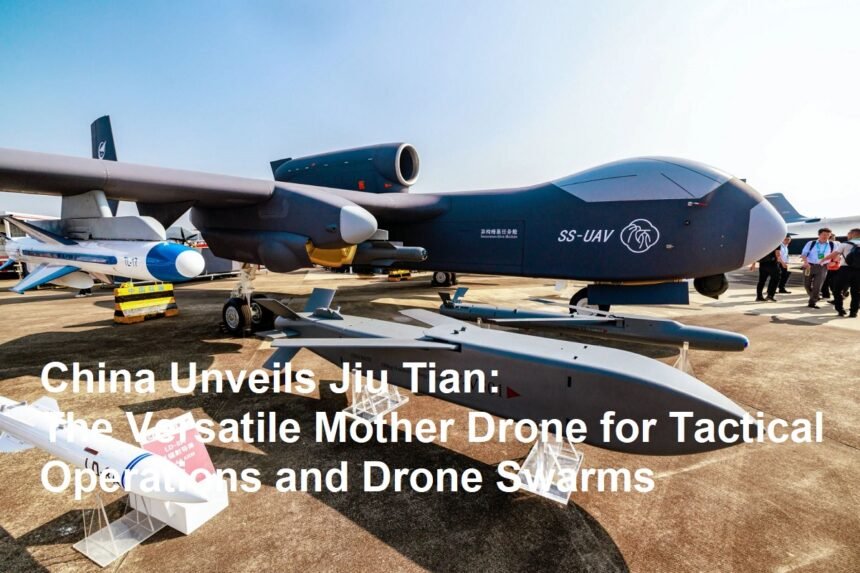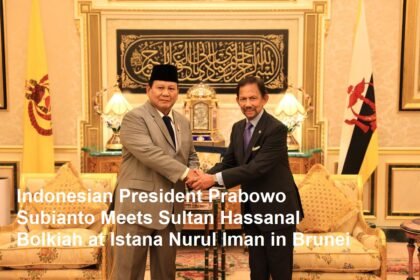China has recently introduced a groundbreaking unmanned aerial vehicle (UAV) known as the Jiu Tian, or “High Sky,” which represents a significant advancement in drone technology. This “mother drone” is designed to carry both weapons and smaller drones, enabling it to perform a variety of tactical operations and coordinate drone swarms. Developed by the Aviation Industry Corporation of China (AVIC) and its partners, the Jiu Tian is poised to enhance China’s military capabilities and reshape modern warfare dynamics.
Technical Specifications
The Jiu Tian is a large, jet-powered UAV with impressive technical features. It has a maximum takeoff weight of approximately 16 tons and a wingspan of 25 meters, making it one of the largest armed reconnaissance drones in China. The drone can operate at an altitude of up to 15,000 meters (nearly 50,000 feet), which places it beyond the reach of many medium-range air defense systems. It can reach speeds of up to 700 kilometers per hour and sustain missions lasting up to 36 hours, providing long-endurance operational capabilities.
One of the most distinctive features of the Jiu Tian is its modular payload bay, known as the “Isomerism Hive Module.” This specialized bay allows the drone to carry and deploy swarms of smaller drones mid-air, which can be used for reconnaissance, electronic warfare, or precision strikes. Additionally, the Jiu Tian is equipped with eight underwing hardpoints capable of carrying various munitions, sensors, and specialized pods, further enhancing its versatility.
The drone is powered by a single high-thrust turbofan engine mounted on top of its fuselage, and it features advanced stealth elements such as radar cross-section reduction and a rear-mounted engine to minimize detectability. It also incorporates cutting-edge technologies like quantum-encrypted communications to secure data links and AI-powered swarm control algorithms to coordinate autonomous drone operations even in contested electromagnetic environments.
Strategic Implications
The Jiu Tian’s capabilities offer China a significant edge in modern battlefield scenarios. Its ability to carry and deploy drone swarms enables saturation tactics that can overwhelm enemy air defenses and provide persistent surveillance and strike options. The drone’s high operational ceiling and long endurance allow it to conduct extended missions over contested areas, such as the Taiwan Strait, where it could play a critical role in intelligence gathering, electronic warfare, and precision targeting.
Moreover, the Jiu Tian can function as a command node for manned-unmanned teaming (MUM-T) operations, coordinating smaller UAVs and potentially manned aircraft in complex missions. This multi-role functionality enhances battlefield situational awareness and force multiplication, allowing for more flexible and adaptive military strategies.
The integration of stealth features and quantum communication protocols improves the drone’s survivability and resilience against enemy countermeasures. By operating beyond the effective range of many air defense systems and using encrypted communications, the Jiu Tian can maintain operational effectiveness in highly contested environments.
Drone Swarm Technology and Its Significance
Drone swarm technology represents a transformative shift in military tactics, and the Jiu Tian is at the forefront of this evolution. The Isomerism Hive Module enables the deployment of numerous smaller drones that can operate collaboratively under AI control. These swarms can perform a variety of tasks, including reconnaissance, electronic jamming, and coordinated attacks, making them highly adaptable to different mission requirements.
AI-driven swarm coordination allows the drones to autonomously navigate, avoid threats, and execute complex maneuvers, reducing the need for direct human control and increasing operational efficiency. This technology also lowers the threshold for armed conflict by enabling rapid, scalable responses to emerging threats.
In scenarios like the Taiwan Strait, the Jiu Tian’s ability to launch and manage drone swarms could create an “unmanned hell” for adversaries, complicating their defense strategies and increasing the risk of saturation attacks. The drone’s role as a command and control platform further enhances the effectiveness of swarm tactics.
Future Outlook
Looking ahead, the Jiu Tian is expected to continue evolving with advancements in propulsion, materials, and AI technologies. There are discussions about integrating reusable rocket technology to enhance deployment flexibility and reduce operational costs. Additionally, the drone’s modular design allows for dual-use applications beyond military operations, including disaster relief, search and rescue, and emergency logistics.
China’s investment in the Jiu Tian program reflects its broader strategic goals of advancing aerospace technologies and developing autonomous systems that blur the lines between surveillance, strike, and command roles. As drone swarm technology matures, platforms like the Jiu Tian will likely become central to future air combat doctrines and multi-domain operations.









